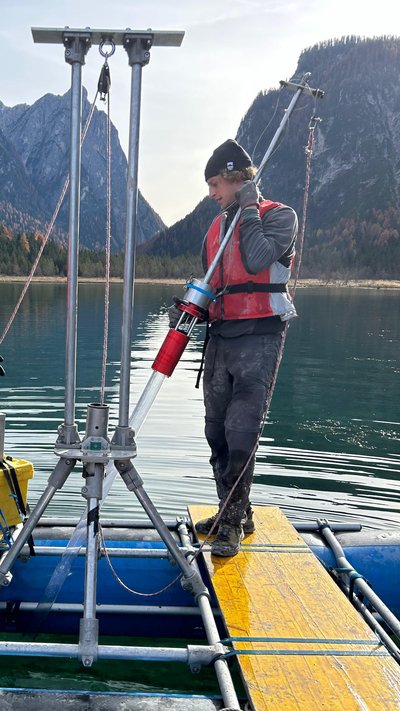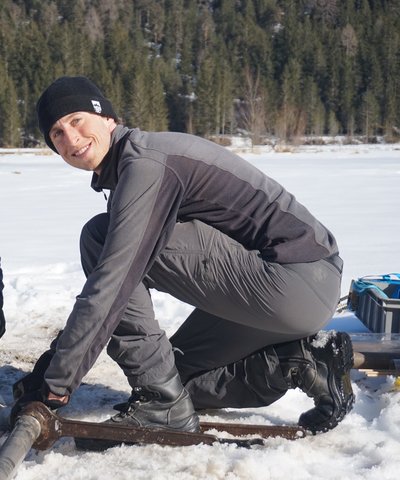People in the Project: Markus Niederstätter
Role in Ngā Ngaru Wakapuke
Markus is from Bolzano, Italy and he is interested in studying past natural hazard events and their signatures in sediments. Now he is a PhD student at the Victoria University of Wellington and his research aims to enhance our understanding of past earthquake activity (RA3 'The Past') in Central Aotearoa New Zealand. He studies the seismic imprints in lakes, wetlands and trenches to establish on- and off-fault paleo-earthquake archives that span several thousands of years. By integrating multiple records, he aims to constrain the source parameters of prehistoric earthquakes and their recurrence rates, thereby providing input for seismic hazard models.

Research background
During his Master’s program at the University of Innsbruck (Austria), Markus investigated lake sediments in the European Alps and discovered evidence of a strong earthquake dating back to Roman times. After completing his thesis, he started to work as a scientific assistant within the Sedimentary Geology Research Group (University of Innsbruck). He joined and organized multiple fieldwork campaigns to collect sediment cores from lakes in south-central Chile and the European Alps. Together with other researchers he studied those archives of past natural hazard events, gaining insights in paleo-earthquake and paleo-tsunami occurrence and their impacts on lake systems in south-central Chile.
Current research
Currently Markus’ work focuses on the Marlborough Fault System, which comprises strike-slip faults at the transition zone between the Alpine Fault and Hikurangi Subduction Zone. There he is identifying promising study sites, that can deliver long and continuous paleoseismic records. He is collecting samples from wetlands, lakes and trenches along faults and compiling knowledge from previous studies. In the laboratory he analyses the samples to identify, characterize and date earthquake events. He aims to combine multiple paleoseismic records to determine the rupture extent and recurrence intervals of past earthquakes and identify potential sequences of major earthquakes.

Publications
Niederstätter, M., Wils, K., Ramisch, A., Haas, J. N., Pomella, H., Szidat, S., Strasser, M., & Moernaut, J. (2025). Strong earthquake in a low seismicity area of the European Southern Alps during Roman Times – A lacustrine paleoseismic evaluation. Quaternary Science Reviews, 357. doi.org/10.1016/j.quascirev.2025.109341
Moernaut, J., Boes, E., Melnick, D., Carvajal, M., Niederstätter, M., Schmidt, S., Aedo, D., Pino, M., & De Batist, M. (2025). A continuous 500‐year sediment record of inundation by local and distant tsunamis in South‐Central Chile (40.1°S). The Depositional Record. doi.org/10.1002/dep2.70031
Hocking, E. P., Kempf, P., Pleskot, K., Suchora, M., Kołaczek, P., Niederstätter, M., & Moernaut, J. (2025). Environmental response of coastal lake Huelde, Chile, after tsunami inundation and earthquake-induced subsidence. Quaternary Science Reviews, 365. doi.org/10.1016/j.quascirev.2025.109474
